|
In This Issue...
- An Interview with Dr. Toru Takumi
- Elucidating experimental traumatic brain injury treatment paradigms that may facilitate clinical translation
- Call for Abstracts
- Japanese Basics
- Trending Science
- Scientists do have hobbies
- Member News
An Interview with Dr. Toru Takumi
by Jessica I. Wooden
Note: Dr. Takumi will be giving the Presidential Lecture at this year's IBNS Meeting in Hiroshima, Japan. View a short bio on Dr. Takumi below.
What are some of your general thoughts about how our understanding of genetics has advanced in the last decade or so (with the Human Genome Project, CRISPR, pharmacogenomics)?
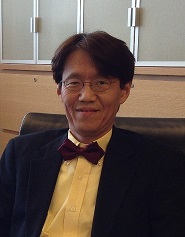
Needless to say, genetics provided us a tremendous progress on life sciences. The Human Genome Project (HGP) changed the technical approach to the scientific issues in the last two decades. cDNA cloning, which was a major subject in molecular biology in 80's and 90's, disappeared from the field along with completion of the HGP. The HGP also made human study the center of biological research from the periphery, and this paradigm shift became the driving force for new innovation in business. CRISPR is still a new technology but it seems to be a dream-like technology and surpass ES technology, I think. Not only CRISPR technology contributes to basic science in all fields of life science but also, for example, CRISPR revives human gene therapy that previously disappointed many people and it'll probably produce more business seeds in near future. Pharmacogenomics? It also contributes science and business, of course, but I haven't paid attention to it (Laugh).
How do you feel about the advent of personalized medicine (using the human genome to diagnose and treat diseases)?
Initially I thought personalized medicine is a kind of word game but now I realize it's realistically a near-future medicine. In fact, for example, in cancer treatment, it's already been a useful therapy as you know. The research field of psychiatric disorders is more than thirty years behind compared with cancer field, so in the future mental illnesses will also become a target for personalized medicine.
What would you say is the current predictive power of genes, both generally and then specifically for predicting ASD (autism spectrum disorder)?
Of course, genes have a large potential in general and they are able to contribute not only to basic study to understand molecular mechanisms but also to clinical application such as diagnosis and personalized medicine mentioned before. For ASD, there are hundreds of risk or susceptible genes. I believe or expect that the future fruits in the diagnosis of ASD come from these genes.
What is the "next big thing" on the horizon, as far as treatment for ASD goes?
A difficult question (Laugh). Maybe neurofeedback? The progress of AI (artificial intelligence) in our current society of the big data is surprisingly rapid. We’ll get something more from information science. On the other hand, as a wet biologist, I expect drugs that repress an inflammation state or signaling can be candidates for especially preventing the disease. I believe one of the causes of psychiatric disorders including ASD is so called “inflammation” like many other diseases. What I mean for inflammation here is not a typical inflammation which we can detect by current clinical examination but a kind of subthreshold state or signaling. This inflammatory subthreshold state or signaling may be a pre-state of the disease and develop the disease by adding other factors including environment. One more thing is not a ”big thing” but a realistic one, which is food therapy including the nutrient based on evidence derived from data of microbiota, etc.
What current research projects are you working on (related to genetics or otherwise)?
We first developed a copy number variation (CNV) model of ASD by a chromosome engineering technique. In addition to different kinds of experiments using mouse models, we’re currently working on cell models for ASD. We developed a new chromosome engineering technique called, “next generation” chromosome-engineering (NGCE), by using CRISPR. Using this NGCE, we’re constructing a whole mouse ES cell library, which contains CNV seen in patients with ASD. The modeled ES cell can be differentiated into various neurons and glial cells and also it can be transplanted to mouse brain to see the neural circuits in vivo. We can also make human ES cells with CNV as cell models of ASD. Secondly or thirdly, we’re working on in vivo physiology to elucidate the target brain region and neural circuits for social behavior. One method is to establish fMRI using awake mice with a resting state and with olfactory stimuli as a task and to see the responsible brain region. Another approach is to set up the virtual reality system of mice in a situation of social interaction in combination with visual and olfactory stimuli and to do macro-imaging of the cerebral cortex. Finally, as I mentioned before, we’re interested in a theory of inflammation as etiology of the disease, so we’re working on glial cells including microglia and try to understand the link between microbiota and brain function.
What would you say has been your major contribution to the field of genetics so far?
We introduced chromosome engineering into research in psychiatric disorders and generated a CNV model of ASD. Our research clearly showed that autism can be studied by using mice, which now many people don’t deny. Before our study a word of a mouse model of autism itself was a doubtful concept but now people use it without hesitation. And now it has become common sense to make genetically humanized mice corresponding to the patients.
After finishing medical school (Fukui Medical School) in Japan, Dr. Toru Takumi received PhD from Kyoto University under the guidance of Professor Shigetada Nakanishi. His thesis work is the first identification of KCNE1, a protein with a single transmembrane consisting of a channel complex (now known as a cause gene for Jervell and Lange-Nielsen syndrome, characterized by long QT syndrome and deafness) by expression cloning using Xenopus oocytes. He had been studied membrane proteins for the first ten years during his scientific career including post-doc as a HFSP fellow at MIT with Dr Harvey F Lodish and Osaka University after returning to Japan. He has been working on biological clock since the middle 90’s and identified mammalian clock genes in Kobe University. He became PI at Osaka Bioscience Institute in 2001 and started a new project on molecular basis of brain functions. His neurobiological studies revealed a function of TLS/FUS, an RNA-biding protein, in neurons, which now attracts neuroscientist’s attention as a cause gene for ALS. The biggest problem in the filed of higher brain functions or their disorders is a lack of quantitative assay system, different from circadian biology, so reverse genetics does not work well. A lesson in the research history of circadian rhythm makes him to produce an artificial founder mouse for forward genetics. He succeeded to generate a mouse model for autism based on human chromosomal abnormality. He moved to Hiroshima University as a full professor in 2008 and had been teaching anatomy (!) for medical students. In 2012, he was appointed to senior team leader at RIKEN Brain Science Institute to study mental disorders including autism spectrum disorders. Currently he is also an adjunctive professor of the University of Tokyo, Saitama University and Hiroshima University.
Elucidating experimental traumatic brain injury treatment paradigms that may facilitate clinical translation
by Anthony E. Kline, PhD
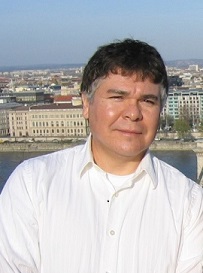 Physical Medicine & Rehabilitation, Critical Care Medicine, Psychology, Center for Neuroscience, and Safar Center for Resuscitation Research. University of Pittsburgh School of Medicine, Children's Hospital of Pittsburgh, John G. Rangos Research Center, Pittsburgh, PA. Physical Medicine & Rehabilitation, Critical Care Medicine, Psychology, Center for Neuroscience, and Safar Center for Resuscitation Research. University of Pittsburgh School of Medicine, Children's Hospital of Pittsburgh, John G. Rangos Research Center, Pittsburgh, PA.
In this short article, Dr. Kline summarizes his recent research comparing polytherapy and monotherapy treatment paradigms following traumatic brain injury (TBI).
Traumatic brain injury (TBI) is a significant health care issue that affects over ten million individuals worldwide each year. Of those, two million reside in the United States. Motor vehicle accidents and falls are the typical causes of TBI in the general population, whereas blasts and shrapnel from improvised explosive devices are the leading causes in the military. TBIs range from mild to severe with the former being the case in the majority of occurrences and generally do not cause marked or persistent behavioral symptoms, while the latter occurs less frequently, but produces significant motor and cognitive dysfunction that can have long-lasting adverse consequences on the quality of life. TBI can also increase the risk for other neurological disorders such as seizures, Alzheimer's disease, and Parkinson's disease. Psychiatric comorbidities, such as major depression, generalized anxiety disorder, and post-traumatic stress disorder are also escalated after TBI and further limit the successful integration of patients to society and the workforce.
Although there have been numerous monotherapies evaluated and shown to be beneficial in the laboratory, these preclinical successes have not translated to the hospital or rehabilitative setting and thus we still to this day cannot point to a single treatment for TBI. Certainly there are several reasons for this lack of translatability, but one salient cause may be that TBI is heterogeneous and affects multiple mechanisms, which in turn may require therapeutic regimens that act on complementary, rather than single, targets. While this approach makes sense, combinational therapeutic strategies have received only modest attention. One practical explanation for the scarcity of such studies may be due to the inherent complexity of the approach. Specifically, it is well established that TBI produces a plethora of secondary pathophysiological responses at time points that are not well defined and hence, deciding when, how often, and at what dose, to administer a single treatment is difficult, and obviously becomes exponentially more complex when determining the correct course of action for dual or "cocktail" therapies.
Thus, we (Dr. Corina O. Bondi, and trainees Jacob Leary, Hannah Radabaugh, and Jeffrey Cheng) set out to answer the question "is more better?" when referring to polytherapy versus monotherapy paradigms for improving neurobehavioral and cognitive function after experimental TBI. Following stringent criteria for study selection (*please see the review cited below), we included 37 papers that fit the specifications and made up the first review to comprehensively assess the effects of combination therapies on behavioral outcomes after brain trauma.
What we found was an interesting mix of results. First we noted that the most common pathologies that were targeted were inflammation, oxidative stress, and neurotransmitter dysregulation. While numerous pharmacotherapies were utilized, neurotrophins and stem cells were also included in the combination therapy paradigms. Second, we found that while some combinations were much more effective than single treatments, there were several cases when the combinations led to a neutral effect, meaning their effect was no different than the single approach, and in a few cases conferred a negative outcome in that the individual effective therapies were no longer beneficial when combined. Third, we found that combination therapies do not need to be comprised solely of pharmaceuticals as studies with higher success rates tended to include non-drug therapies, such as environmental enrichment, a preclinical model of neurorehabilitation, and stem cells.
Overall, the answer to our question “is more better?” when referring to polytherapy versus monotherapy paradigms for improving neurobehavioral and cognitive function after experimental TBI, was an optimistic “yes” as 17 (46%) of the studies exhibited an additive or synergistic positive effect and only 7 (19%) reported a negative interaction. Our hope is that we can learn further (e.g., were the doses inadequate or improperly timed) from the remaining 13 experiments (35%) that revealed a neutral outcome. Nonetheless, these encouraging findings serve as an impetus for continued combination studies after TBI and ultimately for the development of successful clinically relevant therapies.
* Combination therapies for neurobehavioral and cognitive recovery after experimental traumatic brain injury: Is more better? Kline AE, Leary JB, Radabaugh HL, Cheng JP, Bondi CO. Prog Neurobiol. 142:45-67, 2016.
Call for Abstracts
Join the International Behavioral Neuroscience Society (IBNS) for the 26th Annual Meeting on June 26-30, 2017. Hear from best in our fields of study, establish network with scientists and researchers from all over the world, show case your work and visit Hiroshima, Japan, a vibrant city with a rich culture.
Abstracts are also now being accepted for a poster only format through March 27, 2017. Submit your abstract using the 2017 Abstract Form.
Japanese Basics
Japanese cuisine offers a large variety of dishes and regional specialties. Here are a couple of delicacies local to Hiroshima that are especially well-liked:
Hiroshima Style Okonomiyaki
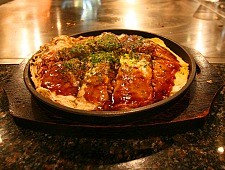 Hiroshima's most famous food is its own style of okonomiyaki (savory pancake). The local version of the dish is characterized by only a thin layer of batter and a generous amount of cabbage on top of yakisoba noodles. Popular toppings include oysters, squid and cheese. The dish is completed with bonito flakes, green laver and okonomiyaki sauce. Large numbers of okonomiyaki restaurants are found in Okonomimura and around Hiroshima Station. Diners are typically seated at a counter in front of the chef who prepares the meal on a large griddle. Hiroshima's most famous food is its own style of okonomiyaki (savory pancake). The local version of the dish is characterized by only a thin layer of batter and a generous amount of cabbage on top of yakisoba noodles. Popular toppings include oysters, squid and cheese. The dish is completed with bonito flakes, green laver and okonomiyaki sauce. Large numbers of okonomiyaki restaurants are found in Okonomimura and around Hiroshima Station. Diners are typically seated at a counter in front of the chef who prepares the meal on a large griddle.
Oysters
 Hiroshima Prefecture accounts for approximately 60-70% of Japan's oyster production. Oysters produced in the region are both consumed domestically and shipped overseas. Oysters are offered at many dining establishments in Hiroshima and Miyajima such as restaurants, food stands and ryokan. They are eaten raw with soy sauce or ponzu, deep-fried, baked, grilled or served on top of rice (donburi). Hiroshima Prefecture accounts for approximately 60-70% of Japan's oyster production. Oysters produced in the region are both consumed domestically and shipped overseas. Oysters are offered at many dining establishments in Hiroshima and Miyajima such as restaurants, food stands and ryokan. They are eaten raw with soy sauce or ponzu, deep-fried, baked, grilled or served on top of rice (donburi).
Exceprt from Hiroshima Food Guide.
Trending Science
In this column, we will share the latest research, interesting scientific articles and news you can use.
Voluntary ethanol consumption changes anticipatory ultrasonic vocalizations but not novelty response.
Read more here:http://www.sciencedirect.com/science/article/pii/S0166432816312049
Erik J. Garcia, Emily T. Jorgensen, Lukas S. Sprick, Mary E. Cain, Voluntary ethanol consumption changes anticipatory ultrasonic vocalizations but not novelty response, Behavioural Brain Research, Volume 320, 1 March 2017, Pages 186-194, ISSN 0166-4328, http://dx.doi.org/10.1016/j.bbr.2016.12.004.
Scientists do have hobbies
by Robert Gerlai
Davide Amato, our editor of the IBNS newsletter, e-mailed me asking if I could write a piece on my hobbies as now the newsletter opened a section on this fun aspect of our lives. First, I was surprized. Why would anyone be interested in what our hobbies are, and why would it be relevant for a newsletter of a professional organization like IBNS? Then, I recalled the absolute astonishment on the face of a student of mine when she learned I ride a motorcycle. "And you wear a leather jacket, and you ACTUALLY ride a motor cycle, REALLY?????!!!!" asked the surprized student. So, I realized that perhaps many students, IBNS members included, may look at us, more established scientists, as fundamentally different from them. But we are not, we are just like everyone else. We have personal lives, and we have hobbies too. Here is my list on the latter.
I like speed. Probably, I inherited the adventure seeking variant of a gene. I was 16 when I got my first motorcycle, a tiny Russian made moped in Hungary. I got hooked right away. The story is simple from then onward: series of motorcycles with rapidly increasing engine sizes, weight, and speed. Now I own two bikes, both cruiser layout, kind of like Harleys from the Easy Rider movie. But I ride alone, don't like packs, don't have tattoos, don't have a beer belly and long beard. But yes, I do have a leather jacket. Sometimes people ask me if I'm "having a mid-life crisis?". I smile at them and tell them no, I just like motorcycles, I always have. It's a deliberating feeling to ride the open road, feel the breeze in your face, hear the humming of the engine underneath you.
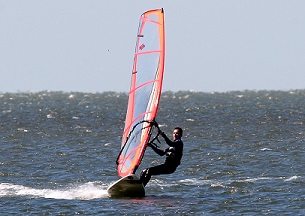 But, it is nothing compared to another hobby I have: windsurfing. I love that sport. It's speed, it's nature, it's agility, balance and technique. And every time I go out on the water it is different. I always learn something new. It's a constant challenge that gives me an addiction-like motivation to continue it. So what do I do when it gets cold and I can't windsurf any more (I live near Toronto)? I use my memory, I recall the beauty of late afternoons, speeding at 30 mph on the water, hearing the splash of waves behind the board rapidly disappearing in the background, and watching the sunset in a way no one else can: far away from the shore, far away from everyone, one with nature. But, it is nothing compared to another hobby I have: windsurfing. I love that sport. It's speed, it's nature, it's agility, balance and technique. And every time I go out on the water it is different. I always learn something new. It's a constant challenge that gives me an addiction-like motivation to continue it. So what do I do when it gets cold and I can't windsurf any more (I live near Toronto)? I use my memory, I recall the beauty of late afternoons, speeding at 30 mph on the water, hearing the splash of waves behind the board rapidly disappearing in the background, and watching the sunset in a way no one else can: far away from the shore, far away from everyone, one with nature.
 But luckily, I don’t just have to rely on my memory to have fun during winter months. Yes, you guessed correctly, I have other hobbies. Tae Kwon Do is one of them. I’ve been training for a decade, and last November earned my second dan black belt. Tae Kwon Do, is a Korean martial art, an Olympic sport. It is fast, fun, and training for it gives you a great work out. I started it with my son, who by now earned his first dan black belt. It made us bond with each other stronger and it helped us develop both physically and mentally. But luckily, I don’t just have to rely on my memory to have fun during winter months. Yes, you guessed correctly, I have other hobbies. Tae Kwon Do is one of them. I’ve been training for a decade, and last November earned my second dan black belt. Tae Kwon Do, is a Korean martial art, an Olympic sport. It is fast, fun, and training for it gives you a great work out. I started it with my son, who by now earned his first dan black belt. It made us bond with each other stronger and it helped us develop both physically and mentally.
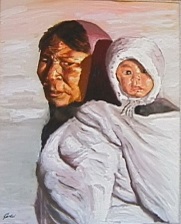 There is another side to this story, however. The speed and adventure loving side of me is definitely there, but I value balance in life, and so I have hobbies that require patience, contemplation and peace too. Speed is not everything. I paint, using oil on canvas. I love landscape, and I like painting portraits too. Oil is a very forgiving medium, it allows me to blend, modify, morph colour and shape on the canvas until the painting is exactly what I wanted it to be. I don’t paint often, but when I do I cannot stop. I usually start Friday afternoon and finish the painting by Saturday morning. The house is quiet, everyone is sleeping, it’s only my canvas, my paint and me, the world disappears. It’s complete focus and immersion. What I love about it is how a three-dimensional scene slowly appears in front of my eyes on the two-dimensional canvas. There is another side to this story, however. The speed and adventure loving side of me is definitely there, but I value balance in life, and so I have hobbies that require patience, contemplation and peace too. Speed is not everything. I paint, using oil on canvas. I love landscape, and I like painting portraits too. Oil is a very forgiving medium, it allows me to blend, modify, morph colour and shape on the canvas until the painting is exactly what I wanted it to be. I don’t paint often, but when I do I cannot stop. I usually start Friday afternoon and finish the painting by Saturday morning. The house is quiet, everyone is sleeping, it’s only my canvas, my paint and me, the world disappears. It’s complete focus and immersion. What I love about it is how a three-dimensional scene slowly appears in front of my eyes on the two-dimensional canvas.
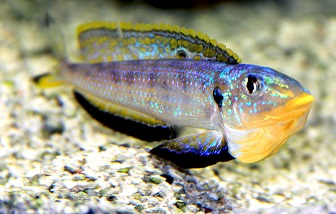 I left the best for last. This is the hobby I love most. I breed rare tropical fish, African cichlids from Lake Tanganyica. I started this hobby when I was 6. Most people assume fish are boring. But it is not true. I see a whole reality show unfolding in front of my eyes in this glass walled cube piece of nature, the aquarium. One male is trying to grab a territory from another, the other getting stronger and attempting to chase away the new owner, a female becoming receptive and stirring up emotions, a couple of fish forming an alliance and going after a bully, and so on. Yes, all anthropomorphic terms, and probably not easy to scientifically prove. Yet, these personal observations persuaded me to start my whole career in behavioral neuroscience. Why do animals behave the way they do? What is behind these responses? And are these animals really that different from us, humans? This hobby became my profession, and my profession still feels like my hobby. So, there you have it, the lines are blurred between work and fun. What connects my hobbies and my science is passion and enjoying what I do. I left the best for last. This is the hobby I love most. I breed rare tropical fish, African cichlids from Lake Tanganyica. I started this hobby when I was 6. Most people assume fish are boring. But it is not true. I see a whole reality show unfolding in front of my eyes in this glass walled cube piece of nature, the aquarium. One male is trying to grab a territory from another, the other getting stronger and attempting to chase away the new owner, a female becoming receptive and stirring up emotions, a couple of fish forming an alliance and going after a bully, and so on. Yes, all anthropomorphic terms, and probably not easy to scientifically prove. Yet, these personal observations persuaded me to start my whole career in behavioral neuroscience. Why do animals behave the way they do? What is behind these responses? And are these animals really that different from us, humans? This hobby became my profession, and my profession still feels like my hobby. So, there you have it, the lines are blurred between work and fun. What connects my hobbies and my science is passion and enjoying what I do.
Robert Gerlai is full professor of behavioural neuroscience at the University of Toronto Mississauga. He is past president and elected Fellow of IBNS, and has also been serving of IBNS as member or chair of numerous committees.
Member News
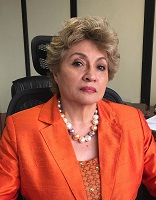 Dra. Rosalinda Guevara Guzmán, Tesorera de la Academia Nacional de Medicina de México, Jefa de la División de Investigación, has recently been appointed Vice-President of the Mexico City Chapter for the Society for Neuroscience (SfN), 2016-2018, Treasurer at the Academia Nacional de Medicina en México (2016-2018), as well as Corresponding Academic of the Real Academia Nacional de Medicina in Spain, appointed by Juan del Rey Calero of the RANM, 2017. Dra. Rosalinda Guevara Guzmán, Tesorera de la Academia Nacional de Medicina de México, Jefa de la División de Investigación, has recently been appointed Vice-President of the Mexico City Chapter for the Society for Neuroscience (SfN), 2016-2018, Treasurer at the Academia Nacional de Medicina en México (2016-2018), as well as Corresponding Academic of the Real Academia Nacional de Medicina in Spain, appointed by Juan del Rey Calero of the RANM, 2017.
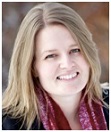 Jodi Pawluski, Ph.D., NARSAD Young Investigator Grantee, Research Associate, University of Rennes 1, recently co-authored a review in Trends in Neurosciences entitled, "The Neurobiology of Postpartum Anxiety and Depression." Read a press release on the review HERE. Jodi Pawluski, Ph.D., NARSAD Young Investigator Grantee, Research Associate, University of Rennes 1, recently co-authored a review in Trends in Neurosciences entitled, "The Neurobiology of Postpartum Anxiety and Depression." Read a press release on the review HERE.
Jacqueline N. Crawley, Ph.D., Robert E. Chason Endowed Chair in Translational Research, MIND Institute, Distinguished Professor, Department of Psychiatry and Behavioral Sciences, University of California Davis School of Medicine, received a new grant from the Simons Foundation to conduct preclinical testing of the GABA-B agonist r-baclofen in a genetic mouse model of autism. This translational study will be conducted in Dr. Crawley's lab at the UC Davis MIND Institute in Sacramento, in collaboration with three other sites. Results will inform a future clinical trial of Arbaclofen, under consideration by the Simons Foundation Autism Research Initiative.
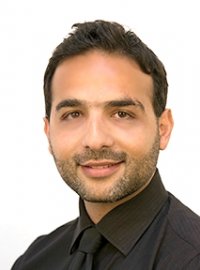 A new behavioural neuropharmacology lab has been established at the Medical School of the University of Cyprus, in Cyprus (Europe). The 'Experimental Pharmacology Laboratory', led by Dr Nikolas Dietis (Assistant Professor of Pharmacology, member of IBNS), was inaugurated just this month and will focus on 'drug repurposing' studies for drug discovery (e.g. finding new therapeutic applications of existing clinical drugs). The new lab aims to apply high-throughput drug screening in vitro & in vivo of hundreds of clinically available drugs in order to discover and characterize their previously unknown neuroactive effects against various chronic neuronal diseases and behavioral conditions. The lab will use its fully-automated zebrafish housing facility and an all-in-one system of behavioral analysis of adult fish & larvae, as well as a multi-conditioning automated system for rodent behavioural analysis that applies a variety of models, including Fear Conditioning, Panic Response, Active and Passive Avoidance, Learned Helplessness, Conditioned Place Preference, Latent Inhibition, Light-Dark Test and Open Field Locomotor Activity. All the behavioural equipment of the lab applies automated detection & analysis, high-quality 3D-video tracking, infra-red sensors, automated scoring and fully controllable experimental & environmental conditions. The lab will support its behavioural screenings with Tecan's most advanced multi-mode microplate reader, Spark20M, for quality high-throughput in vitro screening. Dr Nikolas Dietis welcomes any suggestions or proposals from IBNS members for collaboration towards common research goals, either in the form of joint research projects, participation in grant proposals or else. A new behavioural neuropharmacology lab has been established at the Medical School of the University of Cyprus, in Cyprus (Europe). The 'Experimental Pharmacology Laboratory', led by Dr Nikolas Dietis (Assistant Professor of Pharmacology, member of IBNS), was inaugurated just this month and will focus on 'drug repurposing' studies for drug discovery (e.g. finding new therapeutic applications of existing clinical drugs). The new lab aims to apply high-throughput drug screening in vitro & in vivo of hundreds of clinically available drugs in order to discover and characterize their previously unknown neuroactive effects against various chronic neuronal diseases and behavioral conditions. The lab will use its fully-automated zebrafish housing facility and an all-in-one system of behavioral analysis of adult fish & larvae, as well as a multi-conditioning automated system for rodent behavioural analysis that applies a variety of models, including Fear Conditioning, Panic Response, Active and Passive Avoidance, Learned Helplessness, Conditioned Place Preference, Latent Inhibition, Light-Dark Test and Open Field Locomotor Activity. All the behavioural equipment of the lab applies automated detection & analysis, high-quality 3D-video tracking, infra-red sensors, automated scoring and fully controllable experimental & environmental conditions. The lab will support its behavioural screenings with Tecan's most advanced multi-mode microplate reader, Spark20M, for quality high-throughput in vitro screening. Dr Nikolas Dietis welcomes any suggestions or proposals from IBNS members for collaboration towards common research goals, either in the form of joint research projects, participation in grant proposals or else.
Do you have an interesting hobby or member news to share?
Let us know at [email protected]
|